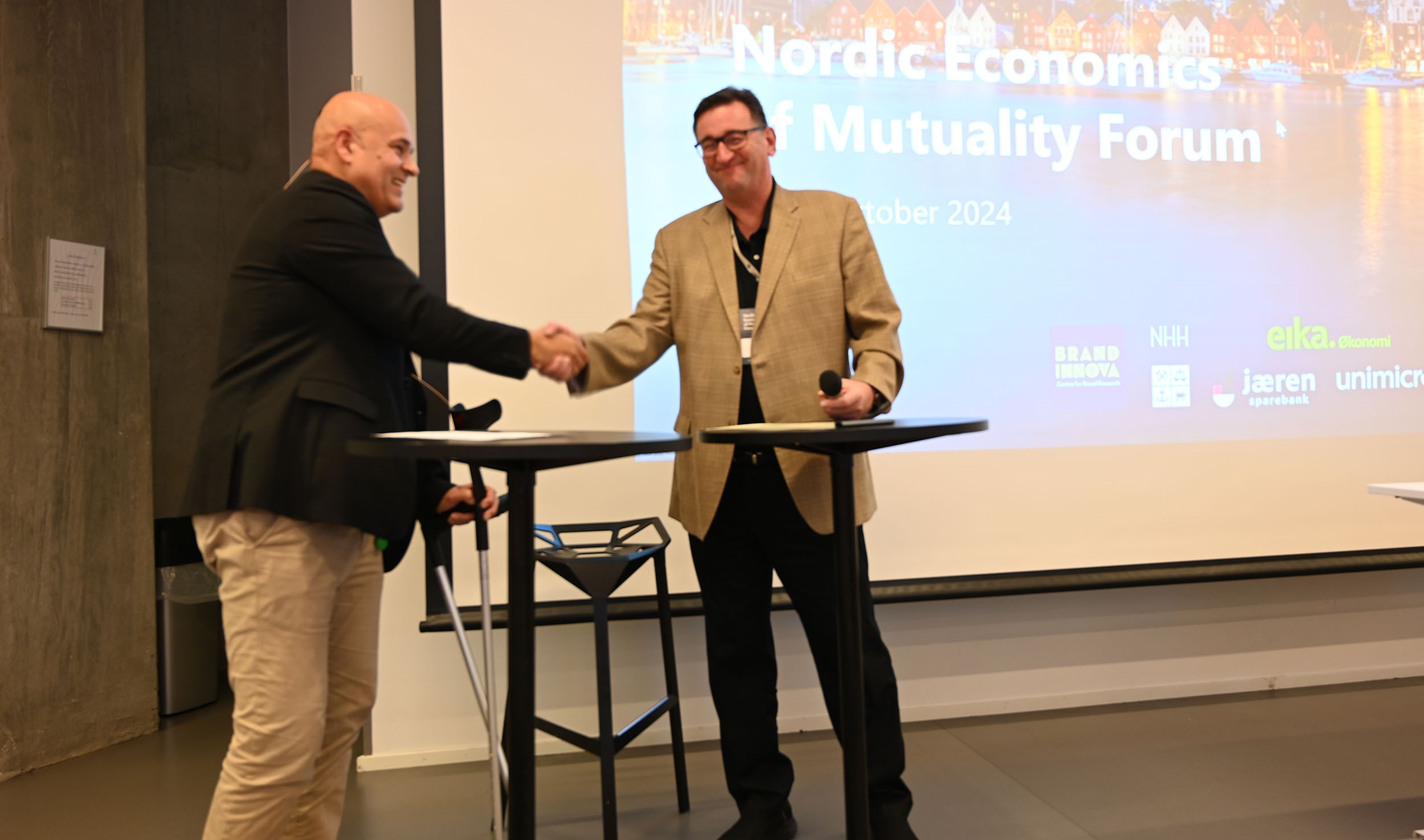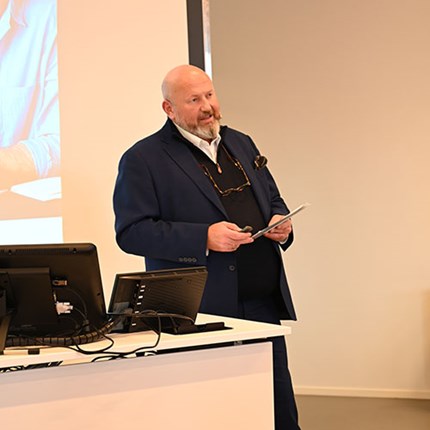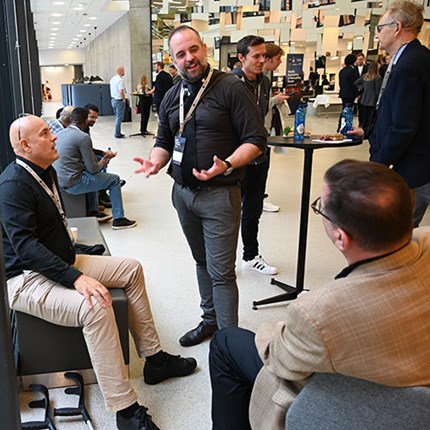
“Profitable solutions for people and planet”
This is the core of the purpose for businesses as they move forward into a future environment where they can no longer focus solely on profits while creating problems for others. NHH will take the lead in developing the new approach to business to implement for SMEs in the Nordics.

The principle is known as “Economics of Mutuality” (EoM). It has been developed at the Said Business School at the University of Oxford and explained at the first EoM-forum in Scandinavia hosted by the Brandinnova Centre for Brand Research. The forum also saw Professor Magne Suphellen of the Department of Strategy and Management and Jay Jakub, Executive Director of the Economics of Mutuality Foundation shake hands and agree to move ahead towards a comprehensive agreement to establish a formal cooperation and joint effort on how to conduct research into EoM and how to implement it in the Nordics between the foundation and NHH.

Working with the Eika-group of Norwegian Savings’ Banks
The Eika-group is a collaboration between circa 50 regional and local savings’ banks across the country, with a presence in local communities, large and small. In order to strengthen the banks’ positions as a partner for local SMEs the will further adept and apply the principles of EoM in their work. Ole Rølvaag is CEO of Eika Okonomi and the approach of EoM is essentially nothing new to the banks in the group, as they have been purpose driven for nearly 200 years already. – Ours should be a type of bank that exists to implement the kind of purpose set out in EoM, otherwise we might as well merge with one the major banking corporations, says Rølvaag.
Adapting EoM-methodology to SMEs
Professor Magne Suphellen says that the core of EoM is to look at how a business interacts with and impacts the entire ecosystem it is part of. Being clear about the purpose of a business and how it draws and solve problems in its community has many advantages he points out. – You create more sustainability, stronger brands, new products and brands with new points of differentiation in the market as well as greater commitment from employees with a lower turnover.
